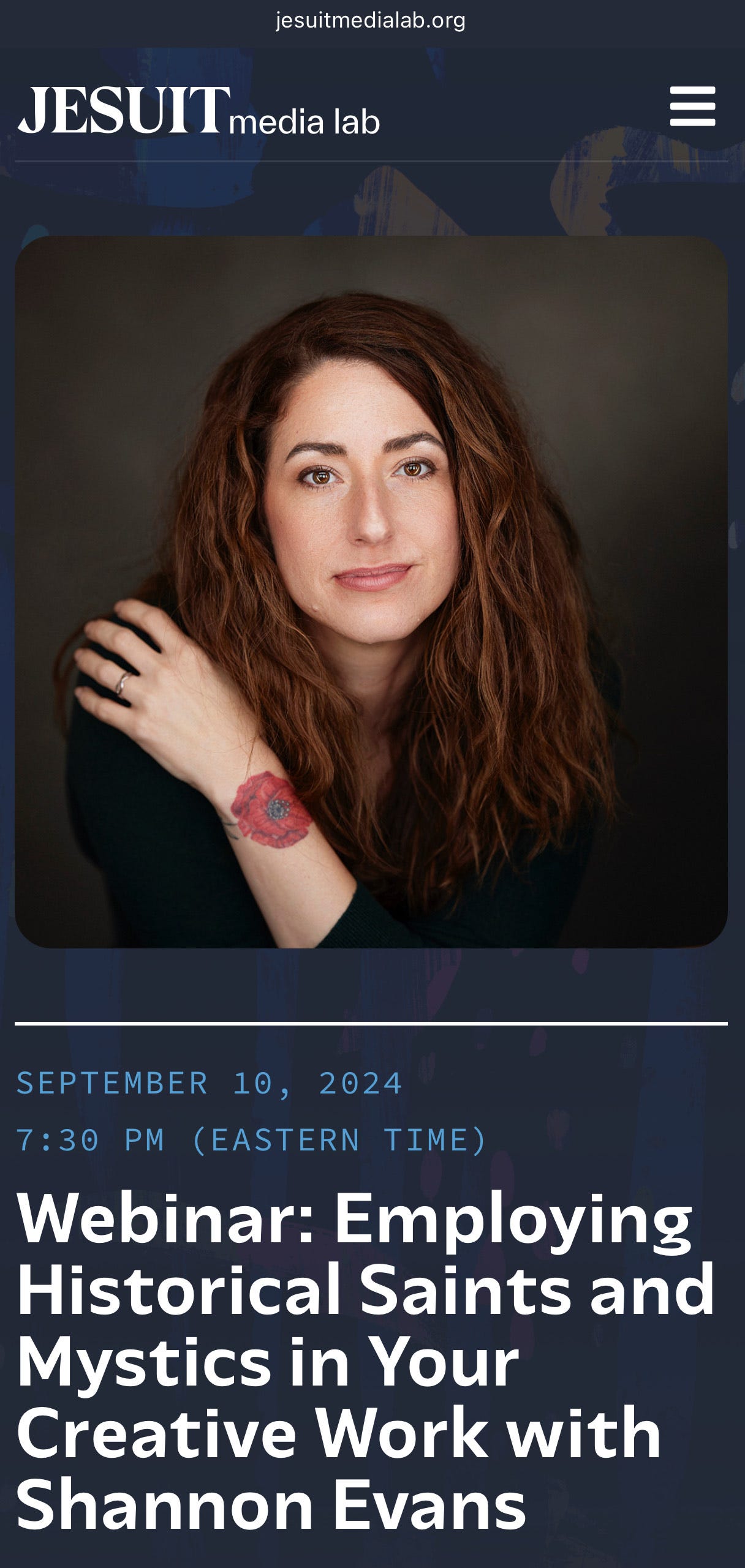“I come from a woman.
Women are not to be satisfied.
And I?
I drink, I burn, I gather dreams.
And sometimes, I tell a story.”
– Terry Tempest Williams,
When Women Were Birds
Women have stories to tell. Our own, certainly, but we also have the stories we carry for one another: our grandmothers’ stories, our sisters’, our best friends’, our mothers’. Stewarding another woman’s story with care is an act of humility, one that demands empathy, curiosity, and solidarity – and a withholding of judgment, patronization, or sensationalism.
What we do for her, we do for ourselves.
Researching and writing about the six women in The Mystics Would Like a Word taught me much about myself; some of the women more so than others, and some, frankly, more comfortably than others. But each shaped me a little more into the woman I will be for the second half of life. I wonder if, after reading, you might say the same. Storytelling is a powerful medium after all, and perhaps a contagious one.
Catherine of Siena once wrote, “We've had enough exhortations to be silent. Cry out with a thousand tongues.” The passing on of women’s stories is one way to find – and raise – our voice. We will have no more exhortations to be silent. We will speak the truths that women have for too long swallowed in exchange for security.
Think of the women who have inspired you – historical or contemporary, dead or alive, family or stranger. Of what do their lives speak? What stories beg to be told?
Write novels about them; compose music inspired by them; take their portraits; make scrapbooks or plaster the family tree on the wall; research saints or heretics; whisper into your daughter’s ear at night the joys and woes of her foremothers. Promise her that women are ravenous creatures, pulsing with life and desire, complexities and contradictions, hunger and thirst. Remind her that we are dreamers and sufferers, lovers and sinners, voices that echo through the wilderness of history, divine bodies that bear the scars of humanity.
And sometimes, we tell stories.


Calling all writers, artists, and makers!
Are you interested in using saints and mystics in your writing, iconography, music, graphic design or other medium?
Making art about such figures can be hard to do well, introducing troubling historicity and a temptation to fall back on reductive cliches. But if handled with curiosity and imagination, even the most familiar saint can become magnetic again, speaking to a new generation through your unique work of art.
Join me on September 10 with the Jesuit Media Lab for a crash course on this topic. 7:30-8:30pm ET via Zoom. Cost: $10
That’s it for me this week, folks. May your August be full of warm days, cool nights, witty humor, and good books.
-Shan






How should a contemporary female mystic who lacks the slightest hint of a a golden tongue, translate mystical theology (the place where this mysticism conveys its insights) into words that speak to the inspirational heart? I've tried, but I'm not sure if I've been adequate for the task. Any suggestions for a clunky mystical writer??